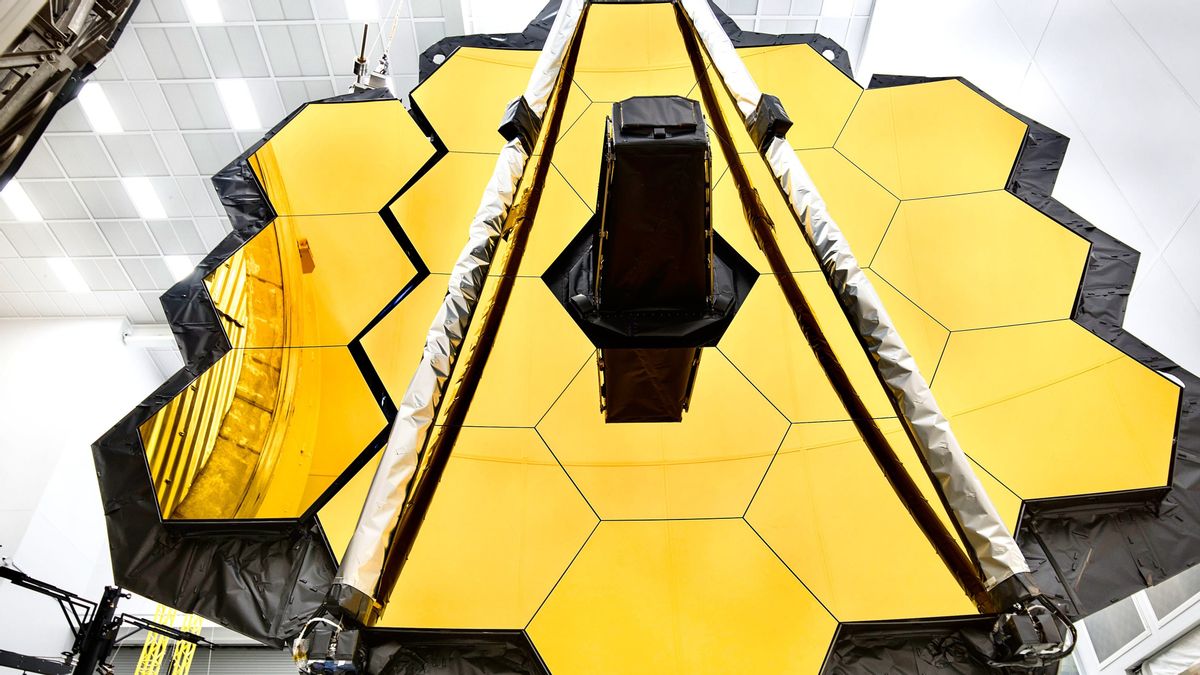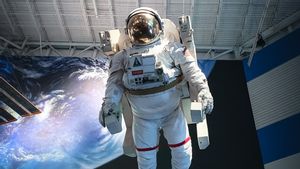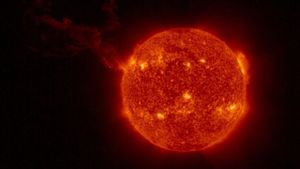JAKARTA - NASA's James Webb space telescope has taken an extraordinary photo of a single star from its 18 mirrors. This ensures that the spacecraft can now see starlight.
This new photo shows 18 out-of-focus copies of a sun-like star called HD 84406 in the constellation Ursa Major. This photo is in a hexagonal formation similar to the honeycomb shape of James Webb's master mirror.
This stunning shot marks the first stage of alignment of the James Webb telescope's 21-foot main mirror, which is made up of 18 hexagonal segments of gold-plated beryllium metal.
Next, the telescope will bring 18 images into focus before aligning them into one very clear star image.
The James Webb Space Telescope blasted off from the Guiana Space Center on Christmas Day 2021 and settled into its orbit one million miles from planet Earth last month.
The $10 billion observatories are currently undergoing a three-month 'alignment process' to get ready to observe the universe.
NASA has described the new photos, referred to as 'array images', in a newly published blog post.
This is the result of 18 primary mirror segments reflecting light from the star to its secondary mirror and into the telescope's main camera, called the Near-Infrared Camera (NIRCam).
"The resulting images show that the team has moved each of Webb's 18 main mirror segments to bring 18 unfocused copies of a single star into the planned hexagonal formation", NASA said in a blog post as quoted by Dailymail.
'With the array of images complete, the team has now started the second phase of alignment: "Segment Alignment", added NASA.
During Segment Alignment, James Webb engineers in the field will update the alignment of the secondary mirrors to bring each point of starlight into focus.
When this 'global alignment' is complete, the team will begin a third phase, called 'Image Stacking', which will bring 18 points of light on top of each other to create a single HD 84406 composite.
"We aligned the points of the segment into this array so that they have the same relative location as the physical mirror", said Matthew Lallo, a systems scientist at the Space Telescope Science Institute, the mission operations center for James Webb.
"During global alignment and Image Stacking, this familiar setup gave the wavefront team an intuitive and natural way to visualize changes at segment points in the context of the entire primary mirror", he added. "We can now actually watch the master mirror slowly shape into the exact, desired shape!"
Another version of the new image shows each point of starlight labeled with the corresponding mirror segment that captures it.
Earlier this month, James Webb returned his first images including a 'selfie' of his main mirror and HD 84406, albeit in an irregularly randomized mosaic.
VOIR éGALEMENT:
As it happens, James Webb's image will not resemble the stunning photos of the cosmos taken by similar space telescopes, such as Hubble.
Instead, the space agency stressed that the images were blurry because they were taken as part of the telescope's tuning process. Regardless, NASA is still releasing it for the public to enjoy.
In early February, NASA confirmed it had captured its first photon of starlight - a milestone it has dubbed the 'First Light'.
"This milestone marks the first of many steps towards capturing an initially out of focus image and using it to slowly refine the telescope", NASA said at the time. 'This is the beginning of the process, but so far, the preliminary results are in line with expectations and simulations.'
The English, Chinese, Japanese, Arabic, and French versions are automatically generated by the AI. So there may still be inaccuracies in translating, please always see Indonesian as our main language. (system supported by DigitalSiber.id)














